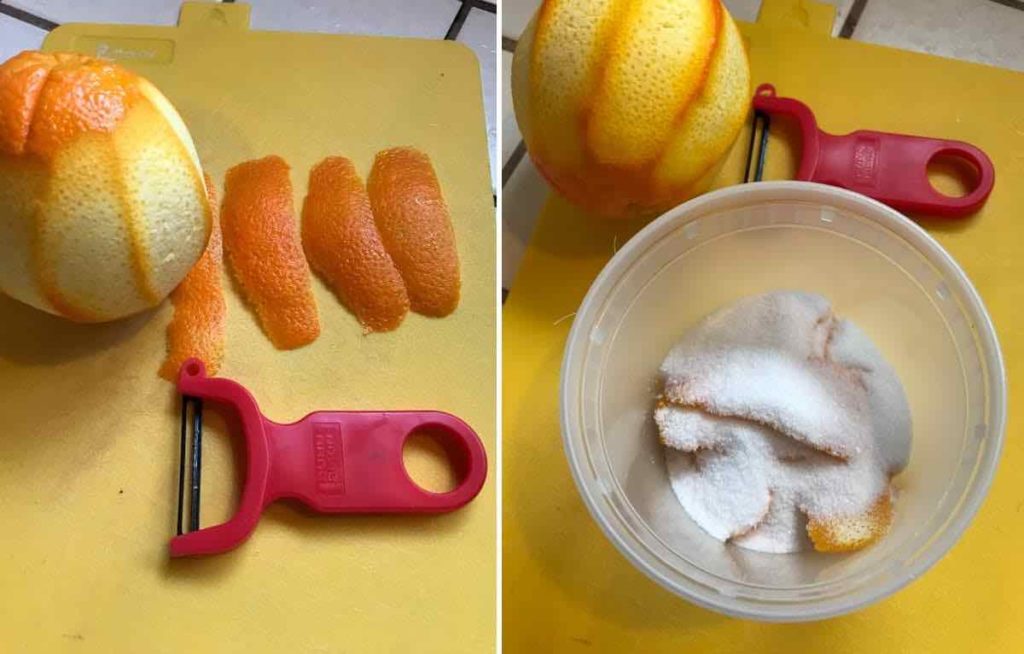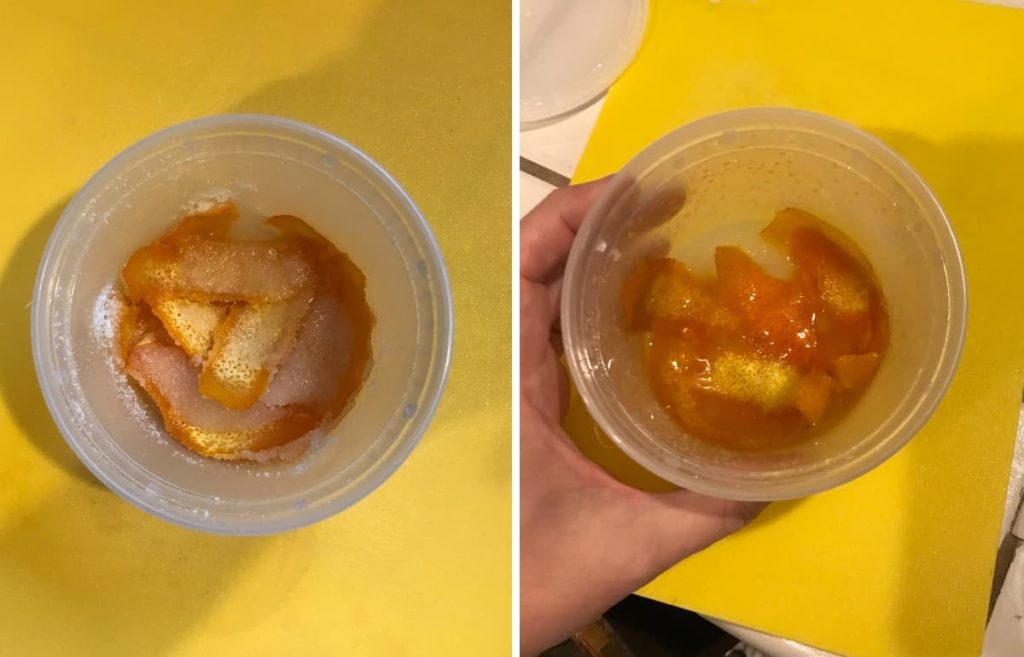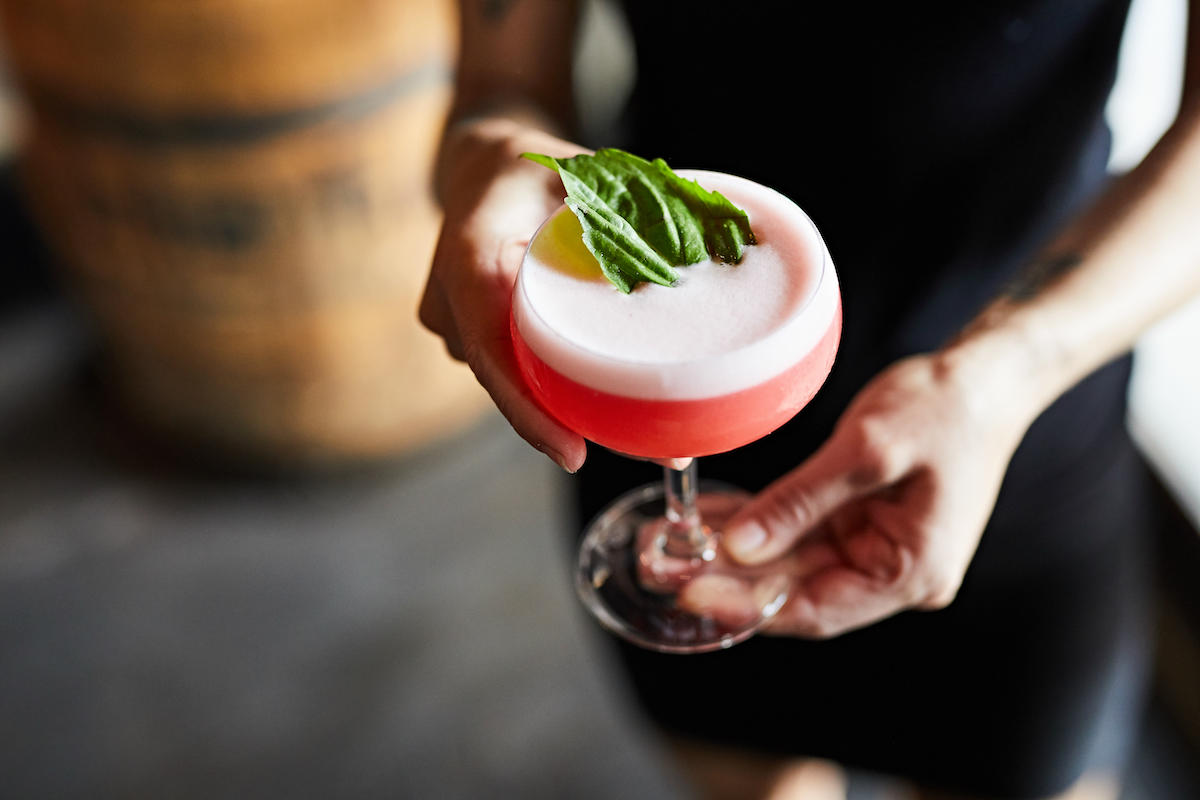It’s a simple ingredient with a fancy name: oleo saccharum. Meaning “sugar oil” in Latin, oleo saccharum is the result of placing citrus peels in sugar to pull out their essential oils. The technique produces a flavored sugar or syrup to use in cocktails.
Way back in the 1600s, 1700s, and 1800s, oleo saccharum was considered an essential ingredient in punch. The recent rediscovery and renaissance of oleo can be credited to David Wondrich in his book “Punch.” In the book, Wondrich writes about the history of oleo and includes many recipes like the Endeavor Punch that calls for lemon oleo saccharum along with rum, Madeira, and citrus juices.
As Victorian-era punch fell out of fashion in favor of single-sized servings of cocktails like slings and juleps, oleo also fell by the wayside. Now it is back, and you can think of oleo as an old-timey ingredient or as a smart new-to-you technique that can be used with an eye toward sustainability: More on that in a second.
In the early days of punch, sugar came in hard clumps or loaves that bartenders had to break up and often clarify themselves. According to Wondrich’s oleo saccharum entry in “The Oxford Companion to Spirits and Cocktails,” in olden days drink makers would rub the outside of citrus fruits on the hard sugar loaves. This performed double duty of extracting the citrus oils and liquifying some of the sugar. These days there’s no need for that.

Making Oleo Saccharum
Simply peel a citrus fruit and cover the peels with sugar in a bowl or other container. Within a few hours the sugar will pull the oils out of the peels and the sugar will turn to liquid. If you use a small amount of sugar you’ll have a concentrated oily syrup (feel free to dilute it after). If you use a lot of sugar relative to the quantity of peels, you’ll get a flavored sugar. Most bartenders leave the peels in the sugar overnight in a sealed container or in a vacuum bag, such as is used for sous vide cooking. You can even use a resealable bag like a Ziplock. (In a pinch, a faster way of making oleo is to simply muddle citrus peels with sugar, but it’s more fun to let it happen naturally.)
If you’re not using the prepared oleo saccharum for a few days, strain or pull out the citrus peels, wiping off the liquid oils clinging to them back into the sugar, and store the peels separately. You can get another use out of the citrus peels by candying them, which we’ll get into below.
How to Use Oleo Saccharum
Oranges, grapefruits, lemons, and to a lesser extent limes (harder to peel; can be bitter) can be turned into oleo saccharum. The easiest way to use the oleo is as you would use an unflavored sugar, or as a simple syrup by adding an equal volume of water to the oleo. Use lemon oleo in a turbo-charged lemonade, orange oleo in your Old Fashioned, or lime oleo in a delicious Ti’ Punch. Or use oleo to add a new flavor to a standard cocktail, like a grapefruit-tinged Daiquiri or an orange Whiskey Sour.

Oleo Saccharum and Sustainability
If your drink recipe calls for citrus juice and/or a single peel as a garnish, you can easily make use of the rest of the fruit that might go to waste. Peel the citrus first, then toss the peels you don’t need with sugar to make oleo saccharum.
Many professional bartenders use the oleo saccharum technique to get additional life out of partially-used citrus, such as lemon slices or peels that were cut for garnishes but not used by the end of the night at the bar. They simply muddle or otherwise beat up these pieces of citrus with sugar and leave them in a container overnight for the person on the morning shift to filter. Note that citrus peels need to be peeled, scraped, poked, or otherwise crushed up a bit so that the oils can be pulled out into the sugar. Using still-unpeeled citrus unfortunately doesn’t work. (An example of a recipe with “citrus scrap syrup” is the Golden Torch, a tequila drink from New York’s Cote, in which the bartenders macerate leftover lemon and orange peels with sugar.)
After making your flavored sugar or syrup oleo, you’re left with flabby, wet, sticky citrus peels that can no longer spray oils atop cocktails in garnishes, but luckily there is a way to make further use of them. Simply place them in a food dehydrator or in the oven on a cooking sheet set at the lowest temperature. After several hours or overnight, the result is dry, crispy, candied citrus peels that you can munch on or use as garnishes. And better yet, now they’re preserved as candy, so you can store them in an airtight container and use them when needed in the future.
Overall, this means that if you plan it right, you can use a single piece of citrus fruit for its fresh juice, to make flavored sugar/syrup oleo saccharum, and as an edible peel garnish. Not bad for a technique from the 1600s.



